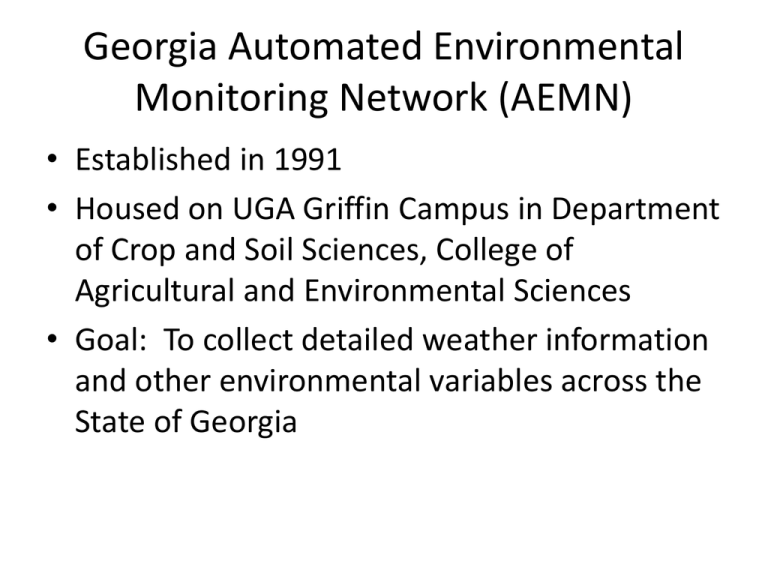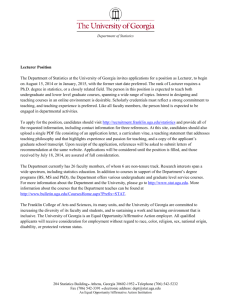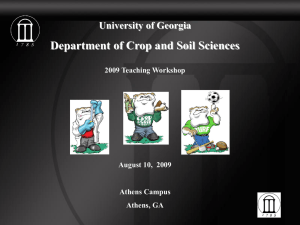Summary - Department of Crop and Soil Sciences
advertisement

Georgia Automated Environmental Monitoring Network (AEMN) • Established in 1991 • Housed on UGA Griffin Campus in Department of Crop and Soil Sciences, College of Agricultural and Environmental Sciences • Goal: To collect detailed weather information and other environmental variables across the State of Georgia Measurements • • • • • • • • • Air temperature Humidity Precipitation Soil moisture Soil temperature (three depths) Wind speed and direction Air pressure Solar radiation Some stations also measure one or more of: Open pan evaporation. Water temperature. Leaf wetness. PAR (photosynthetically active radiation). Dissemination • A summary is calculated every 15 minutes. • Daily summaries are calculated at midnight. • Data is sent to a computer on the UGA Griffin campus by radio, internet, land line phone, or cellular modem. • Data made available to public in near real time at www.georgiaweather.net • N.B. New Web address: weather.uga.edu Applications • • • • • • • • • • Degree days Chilling hours First and last frost dates and frost protection Wind chill and heat indices Wet bulb globe temperature Environmental heat stress Heating and cooling requirements Irrigation management and water conservation K-12 Education Crop Modeling Support • Annual budget approx $350K • UGA salary support $150K • Remainder from data sales, grants, support from user groups. E.g. Forestry commission. • AEMN is NOT in imminent danger of closing. User Examples • In September 2010 the AEMN had over 60,400 separate visitors, representing 49 states and 82 countries. Almost 300,000 of the individual hits were from within Georgia. • County agents polled informally at meetings repeatedly identify the Georgia Weather Network as their main source of current weather information, as it is for many of the farmers they support. • The regional energy utility Southern Company, requiring information on power demand and temperatures for billing purposes, makes extensive use of AEMN. They are responsible for about 13% of site visits. • Peanut growers use a calculator at the AEMN website to determine the risk of tomato spotted wilt, and fruit producers utilize a chilling degree-day calculator to determine if their peaches, blueberries, etc. have met dormancy requirements for bloom in spring.











